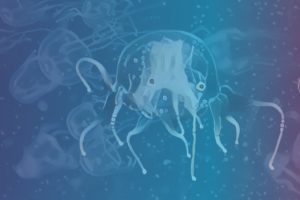Newly Identified Toxin-Binding Molecule Could Prevent Fatal Poisonings
The death cap mushroom, Amanita phalloides, is among the world’s deadliest fungi due to its highly toxic amatoxins. But scientists have now identified a promising antidote compound with the potential to bind and neutralize amatoxins in the body before they cause catastrophic organ failure.
In breakthrough research, German scientists applied computational modeling to screen over 1,000 drug compounds for their theoretical ability to inhibit amatoxins. One molecule showed particular promise in simulations, and went on to demonstrate life-saving potential when tested in cell and animal models of death cap poisoning.
No Reliable Treatment Yet Exists for Deadly Toxins
While intensive hospital care to sustain organ function can sometimes save lives, no antidote drug currently exists to stop the destructive effects of death cap mushrooms once ingested. Their toxins readily enter cells and irreversibly inhibit protein synthesis, rapidly causing liver failure.
Developing a treatment that can intercept and deactivate amatoxins within cells is critical to preventing fatal outcomes, especially in cases where patients exhibit delayed symptoms before seeking care.
Novel Drug Candidate Shows Strong Binding Potential
Using x-ray crystallography data, the German researchers first modeled the 3D structure of amatoxin interacting with its biological target in human cells. The computer simulations then screened drug compounds for optimal molecular fit and binding to block the toxin from attaching.
One drug candidate, originally developed to treat biliary cancer, showed particular promise. Further testing revealed it strongly binds to and neutralizes amatoxins in human cells in vitro. The drug also rescued mice given lethal doses of toxin, heralding a breakthrough.
Researchers Call for Further Study to Confirm Efficacy
The scientists reported this drug candidate showed 10 times greater potency for rescuing intoxicated cells compared to other compounds like silibinin from milk thistle. However, considerable work remains to confirm the optimal dosage, timing of administration and clinical efficacy in humans poisoned by death caps.
If human trials succeed, this antidote drug in combination with intensive care could significantly improve survival rates for death cap mushroom poisonings that too often prove fatal. This discovery highlights the promise of computational drug design to combat toxins once lacking antidotes.












Add Comment